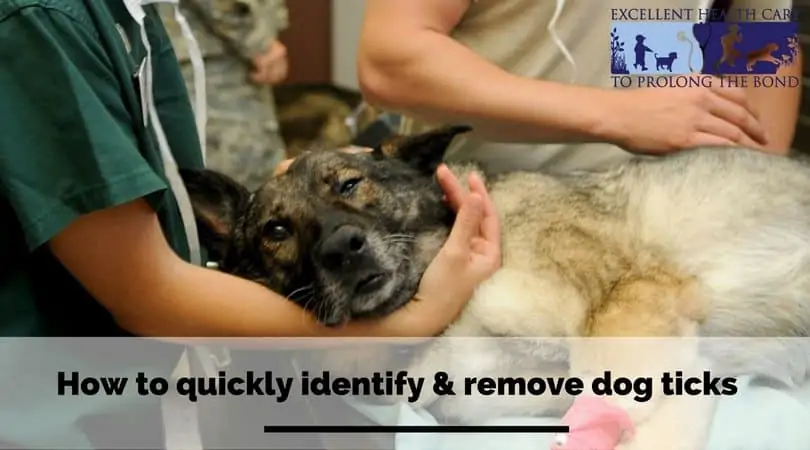Tick bites can pose a serious threat to your dog’s health. On an average, it takes about 24 hours for tick bites to induce symptoms of serious illness in your dog.
Therefore, identifying and removing ticks on your dog as soon and smoothly as possible can be vital for keeping his health at satisfactory levels.
Identify the tick:
To identify a tick, you need to initially have an understanding of how ticks look like. Ticks that cause havoc for your pooch can vary with respect to factors like age, size, and color.
Usually, dog ticks are round or oval and vary in color ranging from pale to brown. Finding a tick on your pooch’s body requires a careful examination of your dog’s coat. Ticks can attach to both the hairy and non-hairy body part of your dog. However, they prefer the less hairy body part that constitutes for surplus blood circulation. Ticks attached your dog skin usually looks like a pebble.
Removing ticks on dogs
For removing ticks on your pooch, you need to prepare yourself with the following accessories:
- Gloves: ticks are carriers of infectious agents that can easily find their way into your bloodstream via even the microscopic voids in the skin. This is why we recommend you to use gloves.
- Tweezers: the pointed tweezers usually work best than any other equipment designed to remove ticks.
- Antiseptic solution: Antiseptic solution or alcohol is useful when it comes to sterilizing the area after removing the tick. Applying antiseptic solution can thwart the skin inflammation and rashes.
- Enclosed jar: ticks are known to survive without a host up to 24 hours. Therefore, it is ideal to ensure that you keep them in a closed jar, which you can dispose of by the end of the tick removal procedure.
How to remove ticks on your dog?
- Put on your gloves and give your dog a complete coat check
- When you find a tick, position the tweezers as close as possible to your dog’s skin (without pinching his skin). Try to pull the tick out in a straight motion by applying uniform pressure. Applying too much pressure can crush the tick, which in turn can leave the mouthparts of the tick still embedded in the dog’s skin.
- After removing the tick, check whether it has been completely removed from the pooch’s skin and place the tick in the enclosed jar. You can add rubbing alcohol to the jar to kill the tick.
- Sterilize the tick bitten area with the help of antiseptic solution.
- Ensure that your dog stays calm and composed during the whole procedure. It is also ideal to reward him after the procedure so that it gets used to the procedure and becomes more cooperative with time.
The don’ts to consider while removing ticks on your dog:
- Do not attempt to remove the tick by hand as it can be infectious.
- Do not crush the tick as it can leave infectious solution from the tick onto your dog’s skin surface and can make the whole scenario worse for him.
- Do not try to kill the tick with solutions like alcohol or vaseline while it is still latched on to your dog’s skin as it opens the risk of tick vomiting on your dog which can cause infection.
- Do not dispose of the tick in your garbage or sink as they can easily find their way back.
Precautions against tick
- Apple cider vinegar is an ideal dietary precaution against ticks. Apple cider vinegar can make your dog’s blood a tad acidic, thereby keeping the ticks and fleas away.
- Use tick shampoo to keep the tick infection under control.
- Lemon solution tick repellent: using a citrus solution (cutting a lemon and storing it in hot water overnight) can turn out to be an excellent means to keep the ticks off your dog.
Do not overlook the possibility of tick infestation in your dog. Keep an eye out for symptoms like lethargy, skin inflammation, loss of appetite and fever. Keep a close eye on your dog and yourself and ensure that your household environment is tidy.

